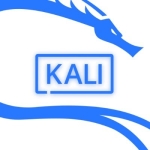What is our primary use case?
We have a private banking client who initially started to use Red Hat Enterprise Linux for approximately 30 nodes. They found that Red Hat Enterprise Linux was the perfect operating system for implementing Ansible automation and managing their infrastructure efficiently. They also deployed Red Hat Ansible Tower for centralized management. Due to the stringent security and compliance requirements in the banking industry, they chose Red Hat Enterprise Linux as their preferred operating system to ensure security and governance across their infrastructure.
What is most valuable?
In terms of clustering, Red Hat Enterprise Linux provides robustness and scalability compared to non-Red Hat Enterprise Linux operating systems. Clustering is not as straightforward with non-Red Hat Enterprise Linux systems. Red Hat Enterprise Linux's scalability is particularly important for us. We utilize Red Hat Enterprise Linux as the operating system to achieve scalability in our operations.
Moreover, Red Hat Enterprise Linux's strong security posture and its ability to scale applications on emerging technologies across the hybrid cloud is next-generation. I believe that's what people are seeking in Red Hat Enterprise Linux. It is built with a strong focus on security, ensuring effective governance and managing security aspects well. We have high hopes that Red Hat will continue to invest more efforts in enhancing security. When it comes to container-based applications and microservices, Red Hat Enterprise Linux plays a crucial role in the hybrid cloud environment.
What needs improvement?
One challenge we've faced is with databases. Configuring and implementing DBs is much easier in non-Red Hat Enterprise Linux systems, especially in Microsoft. However, as a partner, we faced some challenges with Red Hat Enterprise Linux, particularly when it comes to enterprise applications, especially on the IBM side since it's an IBM core company. There are still several IBM products that need to mature on Red Hat Enterprise Linux. Additionally, we require more comprehensive documentation. We face difficulties with the limited availability of documentation for Red Hat Enterprise Linux. It's a different community compared to the Microsoft market, so we need the right documentation to encourage end users to use Red Hat Enterprise Linux.
For how long have I used the solution?
We've been using Red Hat Enterprise Linux for the past seven years. As a business partner, we use the application deployed for our clients, providing consulting services. The clients run their workloads on both Red Hat Enterprise Linux and non-Red Hat Enterprise Linux systems. They have two options for cloud providers, hybrid deployments on IBM Cloud and AWS.
The benefit of using a hybrid approach is often discussed when it comes to migrating workloads to the cloud. Due to the OpenShift community, Red Hat Enterprise Linux has become the preferred operating system as it provides stability and frequent patches and fixes. Maintaining the total cost of ownership is also more manageable on the cloud.
What do I think about the stability of the solution?
It's excellent; in fact, it's the most stable. The presence of kernels is the key factor contributing to this stability. When it comes to security, scalability, and robustness, Red Hat Enterprise Linux (RHEL) excels in all aspects. That's why we rely on this operating system. Personally, during my time as a technical assistant from 2015 to 2016, I installed a couple of IBM applications. I found that everything ran smoothly on Red Hat Enterprise Linux without any failures.
So the stability in Red Hat Enterprise Linux is remarkably good.
What do I think about the scalability of the solution?
The scalability is nice. Red Hat Enterprise Linux doesn't encounter any issues as a supporting core. It can scale effortlessly.
Which solution did I use previously and why did I switch?
I have personally used Solaris. However, we eventually switched from those operating systems, but Red Hat Enterprise Linux has been there since version 4.2, a long time ago. I have worked with versions 7 and 9, and I believe the latest one is version 11, although I'm not certain. I have been immersed in technology for the past couple of years.
One of the most important factors is the community. The Red Hat community is different from others, and it is more active and responsive. If you have Red Hat Enterprise Linux and you want to move your production environment from development or testing, it is easy to switch by simply managing the licensing and purchasing the system. You don't need to make extensive changes at the underlying system level. Your system is ready, and you can deploy it in the production environment. It's up and running. If you want to mitigate risks and ensure security in your production environment, you can simply subscribe to RHEL and use it. On the other hand, migrating from other operating systems can be quite cumbersome and challenging. As a client and partner, I always recommend starting with Red Hat Enterprise Linux in the development and testing environments before moving to production. It makes the journey to production much easier.
How was the initial setup?
Regarding centralization, we have a combination of on-premises and cloud environments where development activities take place. Currently, I don't see a specific use case for centralized development and operations, but Red Hat Enterprise Linux is being widely used both in on-premises and cloud setups. As for hybrid deployments, I haven't personally come across many instances of it. There may be a few customers who are utilizing it but not with us thus far.
Red Hat Enterprise Linux's built-in security features in terms of ensuring application and container portability are not an easy task. Although it's not my personal experience, I've observed that in the industry, there is a lot of discussion about moving toward container-based applications. However, only a small number of clients, especially those in highly regulated industries like banking, government, and oil and gas, have actually embraced containerization. They are facing significant challenges when it comes to adopting container-based applications. Many of them still rely on legacy systems running on-premises, such as mainframes.
What was our ROI?
I have seen an ROI. The most important determinant is the security aspect. Because you rely on the security of Red Hat Enterprise Linux, that's something you are paying for.
What's my experience with pricing, setup cost, and licensing?
When it comes to Red Hat Enterprise Linux pricing, I have a case to share. We recently sold Red Hat Enterprise Linux OS to one of our clients. Before that, I had another client who had concerns about the OS licensing and Red Hat Enterprise Linux's pricing model. The licensing model needs to be more flexible and dynamic because the cost of a single operating system license is relatively high. I'm not suggesting a reduction in cost but rather the introduction of a different model that allows clients to choose scalable options. For example, if a client has licenses for a few operating systems and wants to expand to 50, 100, or even 200, there should be a proposal that offers them flexibility.
Currently, most clients tend to opt for a limited number of licenses and rely on the community for additional usage, which results in revenue leakage. Red Hat should consider adopting a more aggressive open license policy that encourages higher volume licensing with clients.
When you use Red Hat Enterprise Linux in production, it's worthwhile considering the cost. But even for non-production environments, the client will definitely calculate the expenses since it's a massive implementation for large clients with an operating system. You will open your laptop, and you just need an OS. So my suggestion is for Red Hat to create a business model that also targets the user level and desktop level, where Microsoft is widely used. Considering this eventuality and how many people are switching or still using Red Hat Enterprise Linux, we, as a partner, mandate that all our Red Hat team members use Red Hat Enterprise Linux. We don't allow them to use any Microsoft operating system or other operating systems. When engineers join the company and work in the Red Hat pillar, they have to use Red Hat Enterprise Linux.
What other advice do I have?
Red Hat Enterprise Linux's built-in security features, in terms of simplifying risk reduction and maintaining compliance both maintaining compliance and security, are essential aspects. Compliance requirements vary across different industries, such as banking, with each industry having its specific rules. However, security is a common concern that applies universally. Therefore, we need to address both areas.
Red Hat Enterprise Linux provides various logs and event triggers that assist in monitoring the operating system's security. Since the operating system sits as the layer between the hardware and the application, it plays a crucial role in safeguarding against security breaches and penetration attacks. A secure application relies on robust application security, followed by a well-protected OS. By ensuring the OS's security, we can establish a strong foundation for the entire ecosystem. If the OS is secure, we can confidently state that the application is at least 80% secure.
Overall, I would rate the product an eight out of ten.
Disclosure: My company has a business relationship with this vendor other than being a customer. Partner


















